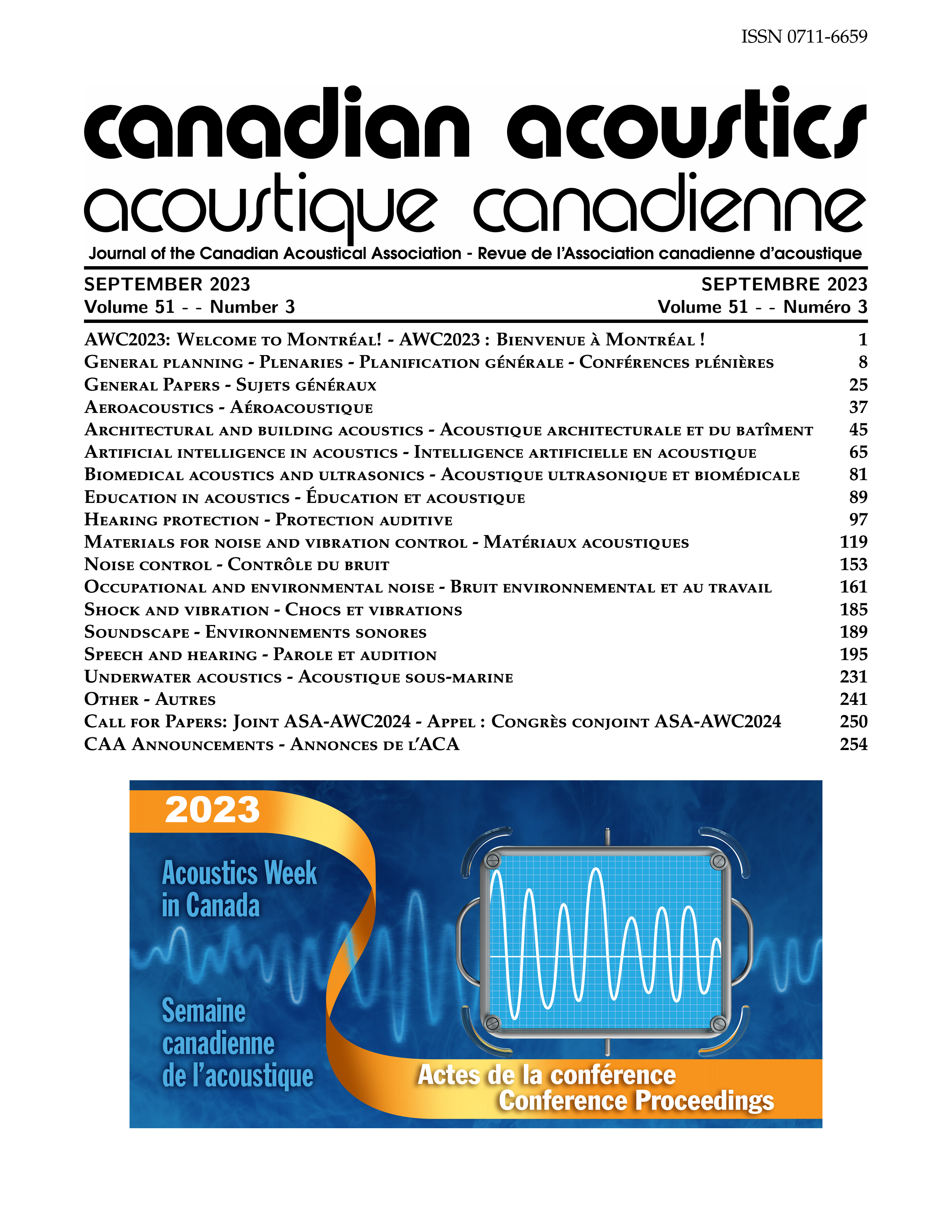Deep Learning-Based Approach for Acoustic Source Localization in Turbulent Flows
Abstract
Detection of acoustic sources in turbulent flows is an important part of the study of aeroacoustic noise. Passive Acoustic Source Localization is a method that uses the pressure fluctuations recorded by a microphone array to triangulate the location of the source. An application of Passive Acoustic Source Localization in the area of aeroacoustics is the detection of aircraft wakes. Aircraft wakes are responsible for causing wake turbulence thus airports must factor in the time it takes for the wakes to dissipate. A robust and accurate method for the detection of these wakes could result in increased efficiency and throughput for airports all around the world. Aircraft wakes are characterized by wake vortices that have been shown to emit characteristic noise that generally lies in the low-frequency range (100-500 Hz). The low-frequency nature of the noise causes traditional methods such as Acoustic Beamforming to fail. In this work, we tackled the problem of low-frequency, Passive Acoustic Source Localization using a Deep Learning-based approach. Deep Learning algorithms have found application in a wide range of domains including Acoustic Source Localization (ASL) due to their ability to extract features from limited or unstructured data. We simulated various test cases and models to test the viability of this approach. The architectures used in the models were Convolutional Neural Networks (CNN) and feed-forward Artificial Neural Networks (ANN). The choice of architecture was governed by the nature of the input feature. The test cases included two-dimensional ASL for detecting sources on the horizon or on a scanning plane parallel to the microphone array plane, three-dimensional ASL, and moving source detection. The results show much promise and are testimony to the viability of the approach, thus giving the incentive to build a real-life ASL framework for the detection of acoustic sources in turbulent flows.Additional Files
Published
How to Cite
Issue
Section
License
Author Licensing Addendum
This Licensing Addendum ("Addendum") is entered into between the undersigned Author(s) and Canadian Acoustics journal published by the Canadian Acoustical Association (hereinafter referred to as the "Publisher"). The Author(s) and the Publisher agree as follows:
-
Retained Rights: The Author(s) retain(s) the following rights:
- The right to reproduce, distribute, and publicly display the Work on the Author's personal website or the website of the Author's institution.
- The right to use the Work in the Author's teaching activities and presentations.
- The right to include the Work in a compilation for the Author's personal use, not for sale.
-
Grant of License: The Author(s) grant(s) to the Publisher a worldwide exclusive license to publish, reproduce, distribute, and display the Work in Canadian Acoustics and any other formats and media deemed appropriate by the Publisher.
-
Attribution: The Publisher agrees to include proper attribution to the Author(s) in all publications and reproductions of the Work.
-
No Conflict: This Addendum is intended to be in harmony with, and not in conflict with, the terms and conditions of the original agreement entered into between the Author(s) and the Publisher.
-
Copyright Clause: Copyright on articles is held by the Author(s). The corresponding Author has the right to grant on behalf of all Authors and does grant on behalf of all Authors, a worldwide exclusive license to the Publisher and its licensees in perpetuity, in all forms, formats, and media (whether known now or created in the future), including but not limited to the rights to publish, reproduce, distribute, display, store, translate, create adaptations, reprints, include within collections, and create summaries, extracts, and/or abstracts of the Contribution.


